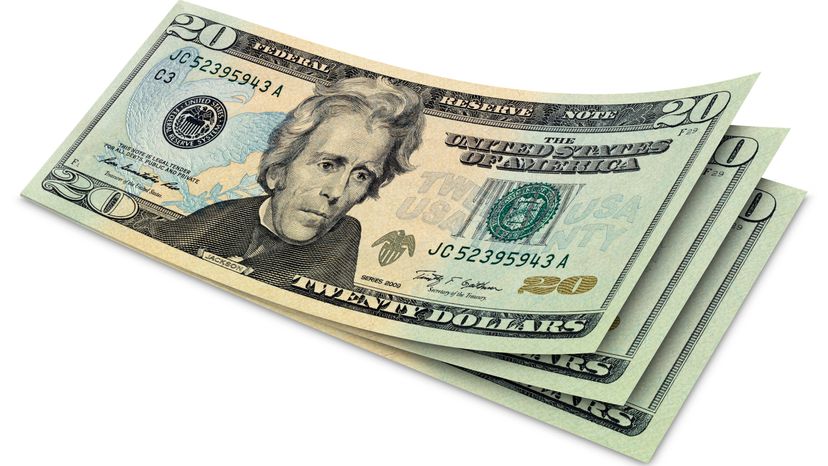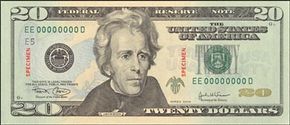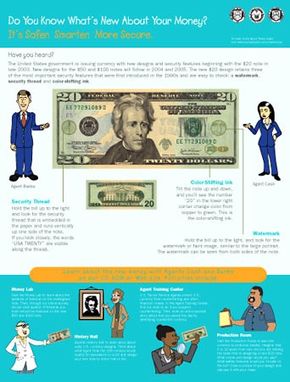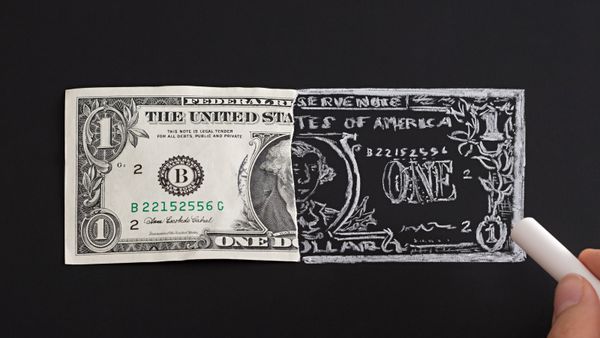In an effort to stay several steps ahead of counterfeiting criminals, the United States plans to introduce new currency designs every seven to 10 years. With the last American money makeover in 1996, the plan is right on schedule.
Similar to its most recent predecessors in size, shape and security, the new $20 design features three key safeguards that can easily be checked by just looking closely at the bill:
- Embedded in the paper, a plastic security strip runs vertically up one side of the note. If President Andrew Jackson is facing you, then the plastic strip is on the left side. Upon close inspection of this security strip, you can see the words "USA TWENTY" and a small flag repeated along the thread. This should be visible on both sides of the bill.
- Located in the bottom right corner on the face of the bill, the number "20" is made of color-shifting ink. A slight backward and forward shift of the bill changes the number "20" from copper to green.
- A faint and smaller version of Jackson's portrait (as seen on the face of the bill) is "hidden" within the paper itself. If you hold the bill up to a light, this watermark is immediately evident from either side of the bill.
Not only do the improved notes feature security upgrades, but some additional design elements should prove helpful to folks who are visually impaired. With enlarged numbers and new color coding, it should be easier to discern different denominations more quickly.
Not since 1905 has a note of United States currency gone beyond the color palette of green and black. It's not that the good-old U.S. "greenbacks" will no longer be green; it's just that the ever-present emerald will be joined by other pigments (different denominations will get their own distinct background colors). Imbued with subtle hues of peach and blue, the new-design $20 note looks mildly festive.
In addition to the infused color, the new design elements are:
- On the face of the bill, the words "TWENTY USA" (printed in blue ink) appear in the background to the right of President Andrew Jackson's portrait.
- Jackson's portrait is no longer surrounded by oval borders and fine lines, and it's been moved higher up on the bill. His shoulders extend into the border and there are additional engraving details to the vignette of the White House on the back.
- Two new American eagle "symbols of freedom" adorn the face of the bill. One eagle, large and blue, is reminiscent of the ones drawn and sculpted during Jackson's time period. The other, small and green, is a modern drawing that uses the same intaglio (raised ink) process as the portrait, engraving and numbers.
- Small, yellow "20s" freckle the back side of the bill.
The last newly-crafted currency launch left many consumers and merchants confused, concerned and even frustrated. According to an article in the New York Times:
Tens of thousands of vending machines in post offices and train and subway stations hadn't been set up to accept the revised version...cashiers and other money handlers didn't always know what to make of the new money. Overseas, some consumers panicked, thinking that their old dollars would be worthless.
Determined not to be derailed by past mistakes, the United States government has opted for some pretty unorthodox methods to ensure that the public is well informed about the upcoming money makeover.



